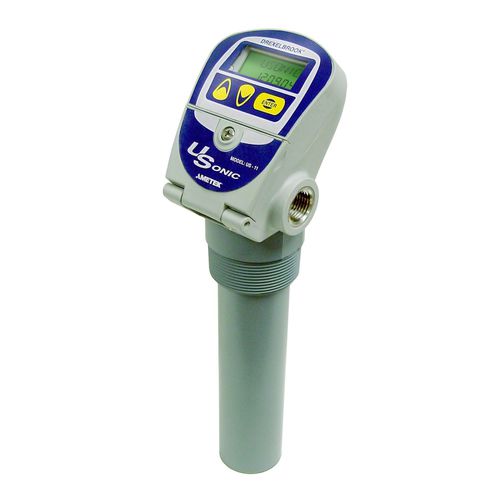
#Product Trends
USonic-R – When Ultrasonic Sensors Outperform Hydrostatic Sensors for Measuring Liquids
Denmark’s attention to nature protection is creating an increased focus on sewage overflow construction and on monitoring the details of potential overflow. Hydrostatic Instruments versus Ultrasonic Sensors.
Increasing extreme weather events have showed the infrastructural limitations of cities, and rural districts have experienced issues with overflow when heavy rain appears. In the Scandinavian countries the first steps of logging not just the amount, but also time and volume of individual overflows have already been made. Data are used not only to calculate the volume of unprocessed waste water that our nature is exposed to, but also, and maybe most importantly, to find out to what degree we need to expand the capacity of the sewage system.
Pump stations, overflow constructions and retention basins are important parts of keeping sewage water away from the streets and the nature. When measuring the level of sewage water in a well or an overflow construction, hydrostatic instruments are exposed to sludge, leaves and anything else that ends up in our sewage systems. The result can be faulty level measurement which may result in pumps wasting power, or pumps not being activated when needed, not to mention the hours spent on cleaning or changing equipment.
To avoid this, ultrasonic level transmitters can be used instead. Using ultrasonic sensors or level transmitters for measuring liquids is a recognized alternative to hydrostatic pressure measurement and ultrasonic level measurement is widely used all over the world. Drexelbrook, one of the leading manufacturers on the market, reports to have installed more than 25,000 ultrasonic sensors and level transmitters, such as the company’s USonic-R, over the past decade.
USonic-R is a level transmitter that picks up data from two separate ultrasonic sensors placed at different locations. Data is logged, flow is calculated from weirs or flumes and signals can be sent to emergency pumps. The level transmitter can also simply be used to deliver crucial data, showing the state of sewage wells, basins, drilling mud and fluid in tanks.
The Usonic-R is FM and ATEX approved and uses the patented SmartGain™ feature to eliminate the classic issues of false echoes. SmartGain™ quickly and easily adapts to the obstructions of the pump station, such as ladders and pipes in sewage wells. This ensures correct reading of the levels at any given time.
The display device contains the converter and datalogger as well as the actual the display. The device is weather proof, IP66/NEMA6-P rated, and is additionally UV protected, meaning that in general the device does not need further protection.
Data is delivered either as a 4-20mA or Modbus signal which allows easy integration of the USonic-R level transmitter into the most common SCADA systems. The USonic-R works seamlessly with RTUs, simple pump controls or PLCs which is important on remote installations where intelligent and autonomously operation is required by level measurement, flow calculation and activating pumps only when necessary.
The USonic-R even allows connecting 2 individual ultrasonic sensors enabling the user to calculate sum or differential of pumped volume by measuring on each side of 2 basin walls.
Drexelbrook is an acknowledged leader in level measurement with more than 50 years of industry experience. It offers a full range of process level measurement solutions, including RF Admittance/Capacitance, TDR/Guided Wave Radar, Open Air Radar, Ultrasonic, Magnetostrictive, Hydrostatic, Vibration, Conductive and Float devices.
Drexelbrook level measurement instruments are used in a wide range of industries, including water/wastewater, petroleum, chemical, petrochemical, food/beverage, power, pharmaceutical, pulp/paper, mining, aggregates, feed/grain among others.






